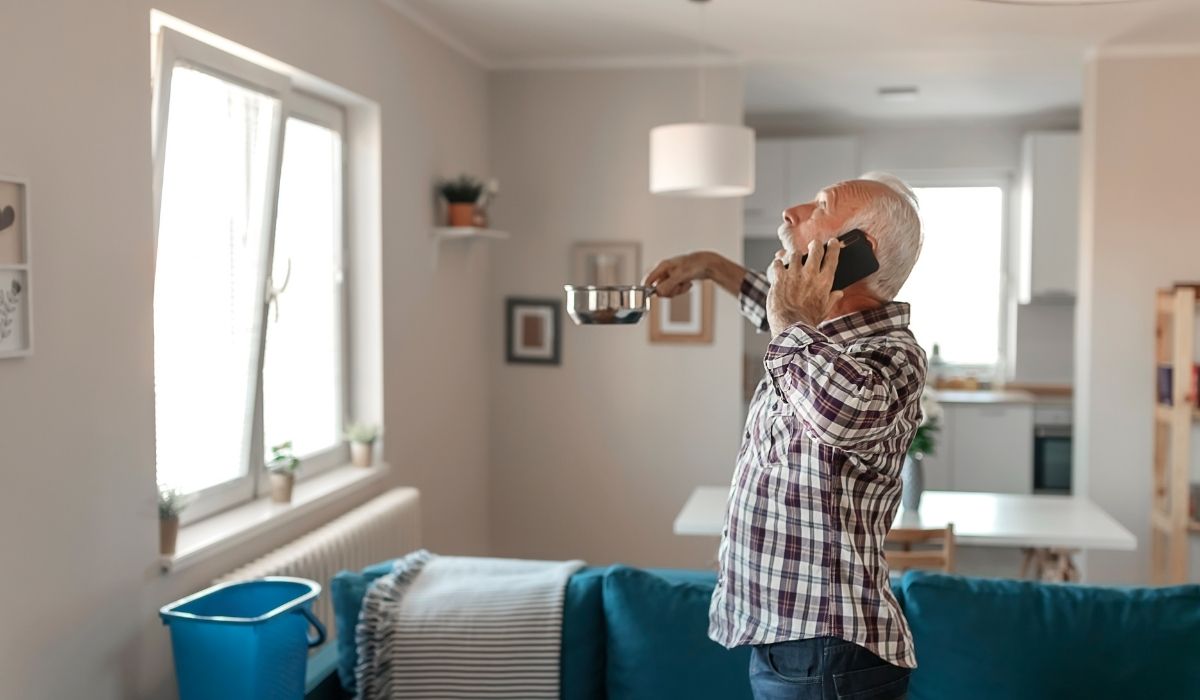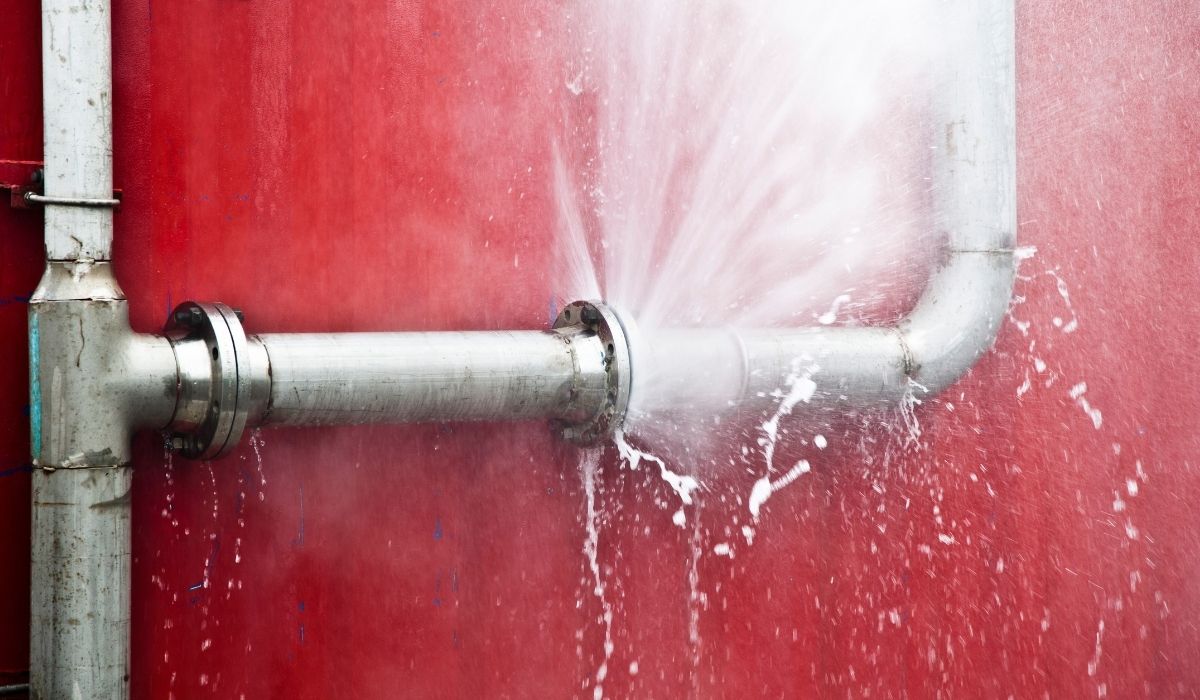Why Choose 24/7 Water Damage Restoration in Orange County

The First Few Hours Define Your Recovery From Water Damage
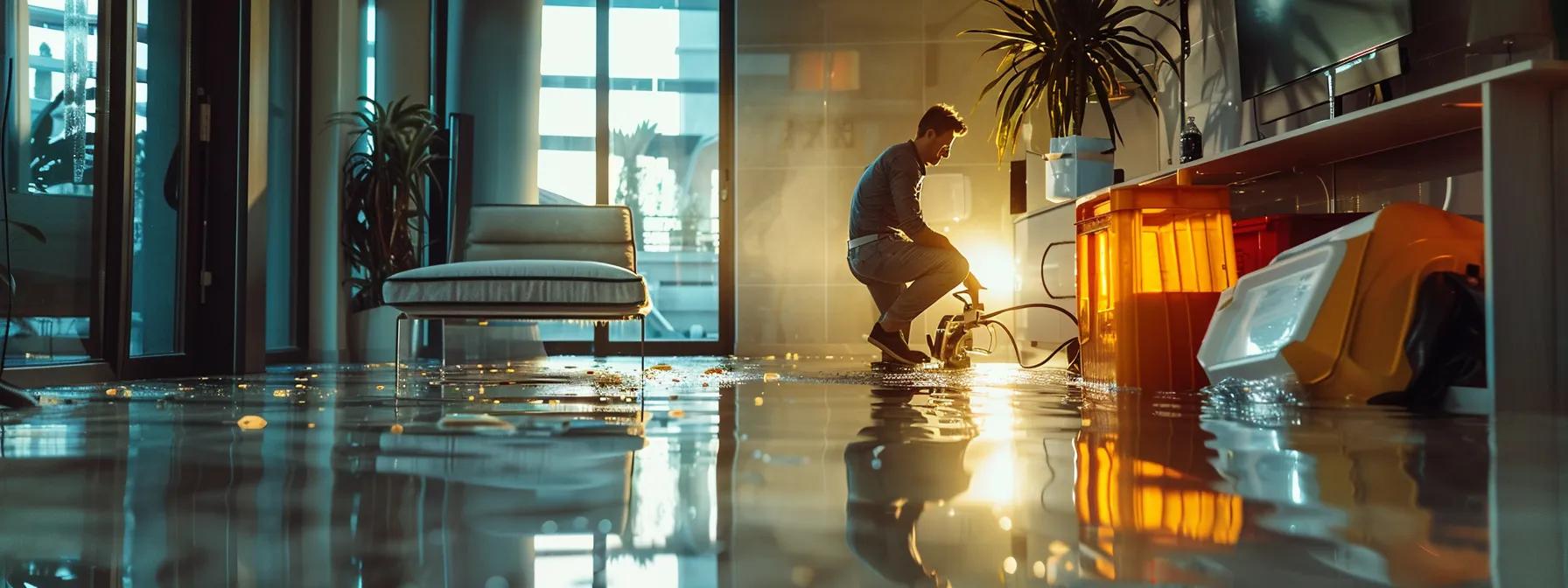
When water infiltrates a property, the first few hours are critical in determining the extent of damage and the cost of repairs. Immediate action can prevent water from seeping deep into structural materials like drywall, wood flooring, and insulation, which can lead to mold growth, bacterial contamination, and long-term structural deterioration. Rapid response is crucial; even a minor leak or burst pipe can escalate into an emergency that requires a sump pump, professional water extraction, and comprehensive drying solutions. In Orange County, where humidity and unpredictable weather patterns such as sudden rains or flooding are common, every moment lost increases the severity of water damage. Restoration professionals emphasize that the initial phase is when water disperses quickly, saturating floors, walls, and valuable furniture. This spread not only weights down structures with excess water but also creates an ideal environment for mold to proliferate. Advanced water extraction devices like industrial vacuums and infrared cameras are essential tools used during the first hours to detect hidden moisture within walls and under floors. In these crucial hours, mitigating water damage means reducing repair costs and preventing future health risks associated with mold exposure and bacterial growth.
How Quickly Water Spreads and Saturates Materials
Water can spread at an alarming rate through porous materials in a matter of minutes. Within the first hour, water may penetrate deep into carpets, subfloors, and walls, making detection difficult even with infrared cameras. This rapid saturation is exacerbated in older structures where materials have already aged or weakened due to previous water exposure. Studies have shown that the rate of absorption in porous materials increases linearly with water volume, meaning that a small leak can become exponentially worse if not immediately treated. For example, laboratory tests indicate that water penetration in standard drywall can reach depths of up to 1 inch within the first 30 minutes after exposure. In addition, materials like wood flooring and insulation, common in many Orange County homes, wick moisture from contact surfaces quickly, accelerating structural weakening. Restoration experts advocate for the swift application of industrial-grade air movers and dehumidifiers to intercept this spread. With proper equipment, high-powered vacuums, and moisture detection tools, water extraction teams can limit the moisture content in building materials, preserving the integrity of the structure and avoiding future costly repairs.
Understanding the Initial Onset of Structural Concerns
The onset of water damage is not always immediately visible. Structural concerns begin the moment water contacts key materials. As water saturates building components, it compromises the load-bearing capacity of the structure. In some cases, even minimal water exposure in a critical area such as a beam or joist can suggest future structural failure if left untreated. Early water saturation can lead to warping, corrosion of metal fixtures, and even wood rot, which substantially diminishes the overall durability of the property. Professional restoration services conduct immediate structural assessments using state-of-the-art infrared technology to identify hidden moisture pockets that might jeopardize stability. These assessments are vital in preventing long-term issues, as compromised structures become safety hazards. For instance, frequent exposure to water can lower the tensile strength of wood by up to 20% over time, significantly increasing the risk of collapse or degradation. In addition, ceilings and walls that retain water can eventually lead to sagging, cracks, or complete failure of partitions. Property owners are urged to schedule an immediate inspection by certified technicians to accurately gauge the severity of the damage and to initiate prompt restoration procedures.
Preventing Mold Amplification Through Prompt Action
Within hours of water intrusion, a breeding ground for mold is created. Mold spores are ubiquitous in the environment and can settle on damp surfaces within minutes. Once these spores germinate, they release mycotoxins that not only damage building materials but also pose serious health risks to occupants. Research indicates that even 24–48 hours of moisture exposure in an environment with suitable temperature and humidity can result in significant mold growth. This rapid growth underscores the necessity of immediate drying and dehumidification. Professional water damage restoration teams employ high-capacity dehumidifiers and air movers to achieve rapid moisture removal from surfaces and the air. Furthermore, antimicrobial treatments are applied to affected areas to prevent spore generation and to secure vulnerable materials from permanent damage. Quick intervention is critical because mold remediation becomes exponentially more challenging, expensive, and hazardous as time passes. Homeowners in flood-prone areas of Orange County are advised to contact emergency water restoration services immediately to mitigate the risk of mold amplification and to maintain indoor air quality and structural integrity.
Protecting Valuables From Escalating Water Harm
Valuables and personal belongings are often at severe risk during water damage. Items such as electronics, important documents, antiques, and furniture can incur irreversible damage if exposed to water. Quick action during the initial hours can mean the difference between salvageable items and complete losses. Restoration experts recommend a systematic salvage process where items are removed from the affected area as soon as it is safe; this process includes documenting damages for insurance claims, carefully drying items with specialized equipment, and sometimes employing freeze-drying technologies for delicate items. In professional water damage restoration scenarios, certified technicians are trained to handle sensitive belongings, ensuring they are properly cleaned, disinfected, and restored wherever possible. Preventative steps can include using waterproof storage for essential documents and regularly inspecting attic and basement areas for early signs of leaks. By acting quickly, property owners can significantly reduce the overall financial burden of water damage and preserve cherished items.
The Financial Impact of Every Delayed Minute
Time is money when it comes to water damage restoration. Each additional minute of delayed professional intervention can exponentially increase repair costs. Structural repairs, mold remediation, and replacement of damaged items become more extensive and exhaustive if water is allowed to settle. Insurance companies often scrutinize restoration timelines to determine the validity and coverage of claims. In some instances, delays can result in partial coverage or even claim denial, significantly burdening homeowners with high out-of-pocket expenses. Additionally, prolonged exposure to moisture can result in energy inefficiencies due to compromised insulation, leading to higher utility bills over time. Quick, efficient water extraction minimizes the overall risk of cost escalation and enhances customer satisfaction. Homeowners should be aware that investing in prompt water restoration services is a cost-effective decision that shields them from far more expensive remediation and repair challenges in the future.
Key Takeaways: – Immediate water extraction limits structural damage and prevents mold growth. – Quick response is vital to preserve the integrity of building materials. – Early intervention reduces long-term repair costs and insurance complications. – Protecting valuables requires swift salvage and specialized handling.
Our Rapid Water Damage Response System in Action Across Orange County
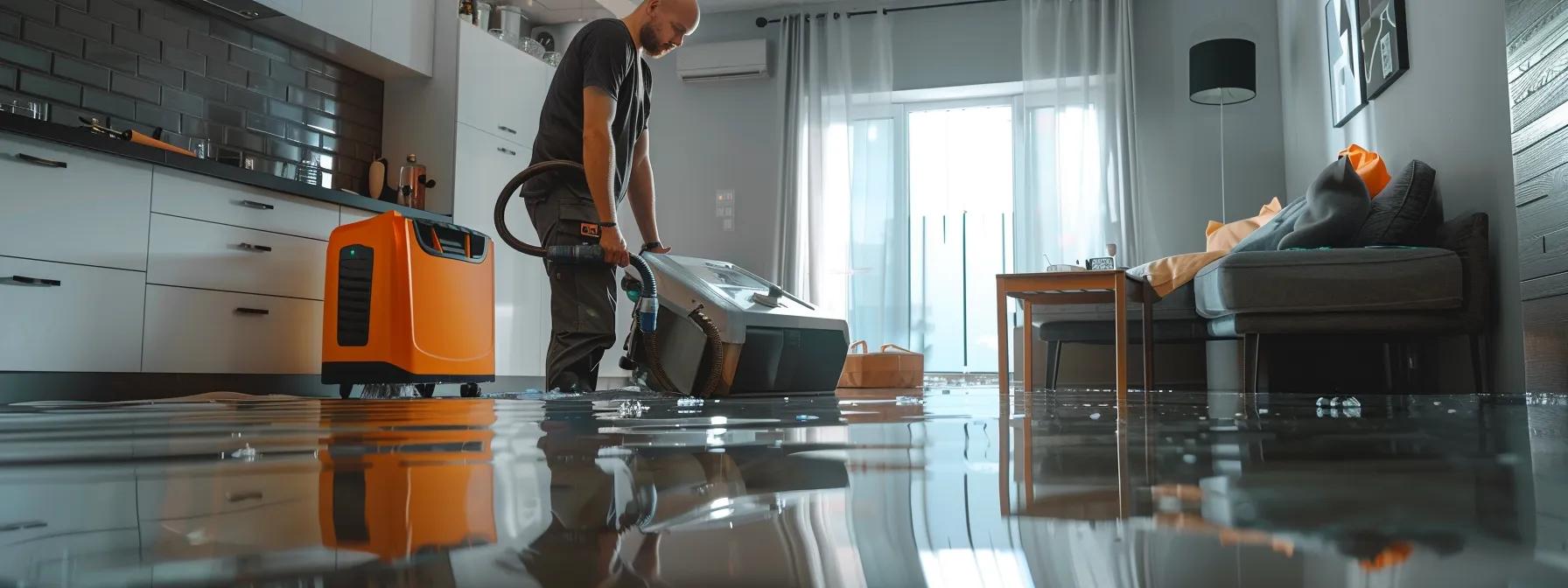
In Orange County, rapid water damage response systems are designed to address emergencies 24/7, ensuring homeowners and businesses receive immediate assistance when disaster strikes. When the call for help is initiated, certified technicians are dispatched promptly. This rapid response is critical in reducing the overall damage as experts begin by assessing the safety of the property and implementing immediate water extraction strategies. Utilizing advanced diagnostic tools such as infrared cameras, moisture meters, and mapping technologies, technicians accurately identify affected areas—even those that are hidden behind walls or under flooring. This swift on-site assessment is vital for developing a tailored restoration plan that considers the unique layout of each property and the extent of water penetration.
Initiating Your Call for Immediate Assistance
The restoration process begins as soon as the emergency call is placed. A dedicated hotline ensures that distressed property owners can reach experienced professionals at any time. Once contact is made, the dispatch team immediately coordinates with field technicians to schedule an on-site evaluation. With real-time communication systems, teams are mobilized within minutes to ensure that no delay hampers the essential first steps of water extraction. Initiating the call triggers a series of well-rehearsed protocols designed to quickly stabilize the affected area. This rapid initiation process greatly diminishes the risk of secondary damage caused by prolonged water exposure.
Dispatching Certified Technicians Around the Clock
Once the call is logged, a fleet of certified technicians is dispatched throughout all areas of Orange County. These technicians are extensively trained in both water extraction and structural drying techniques, ensuring a high level of proficiency. Their training includes the use of the latest water restoration technologies and adherence to strict industry standards, such as those set by the Institute of Inspection, Cleaning, and Restoration Certification (IICRC). Dispatch methods now integrate GPS tracking and optimized routing software, guaranteeing that the nearest available team reaches the site without delay. The well-coordinated dispatch process minimizes downtime, mitigating the potential spread of water and subsequent mold growth.
Swift on-Site Assessment and Safety Protocols
Upon arrival, the first task of the restoration team is to conduct a thorough safety assessment. The onsite team checks for electrical hazards, unstable structures, and potential areas of contamination before initiating water removal. Thorough safety protocols are followed rigorously, ensuring the well-being of both the occupants and the technicians. Using infrared detection and moisture mapping, the team outlines all areas with water saturation and sets up containment zones to prevent further spread. Detailed logs are maintained during these evaluations to assist with insurance claims and future inspections. Safety and accuracy during the on-site assessment set the foundation for a successful remediation process.
Implementing Emergency Water Removal Orange County Techniques
With the assessment complete, the team immediately deploys emergency water removal techniques. High-powered pumps and industrial vacuum systems are activated to extract standing water rapidly. In addition, portable dehumidifiers and air movers are strategically placed to expedite the drying process while reducing ambient humidity levels. These emergency techniques are designed to stabilize the property and prepare it for more detailed restoration work. The team often isolates water-damaged zones using physical barriers to prevent cross-contamination and further damage to unaffected areas. This approach not only saves time but also limits the overall structural stress on the property.
Beginning the Drying and Dehumidification Process Promptly
Following water extraction, the critical next phase is drying and dehumidification. This stage leverages advanced drying equipment to rapidly reduce moisture levels throughout the structure. Air movers, coupled with commercial-grade dehumidifiers, are set up to circulate air continuously, ensuring that hidden moisture pockets are eliminated. This process is monitored meticulously, with technicians making adjustments based on real-time moisture readings. An effective drying regimen can commence within minutes of water extraction and is integral to preventing mold growth and secondary damages. The entire procedure—from emergency extraction to controlled drying—underscores the importance of a coordinated, rapid response in water restoration.
Key Takeaways: – Immediate initiation of professional help triggers a rapid response system. – Certified technicians use advanced tools for fast, accurate water extraction. – On-site safety assessments ensure effective mitigation without secondary hazards. – Swift drying and dehumidification are critical to preventing mold and long-term damage.
Benefits of Accessing 24 Hour Water Restoration Services
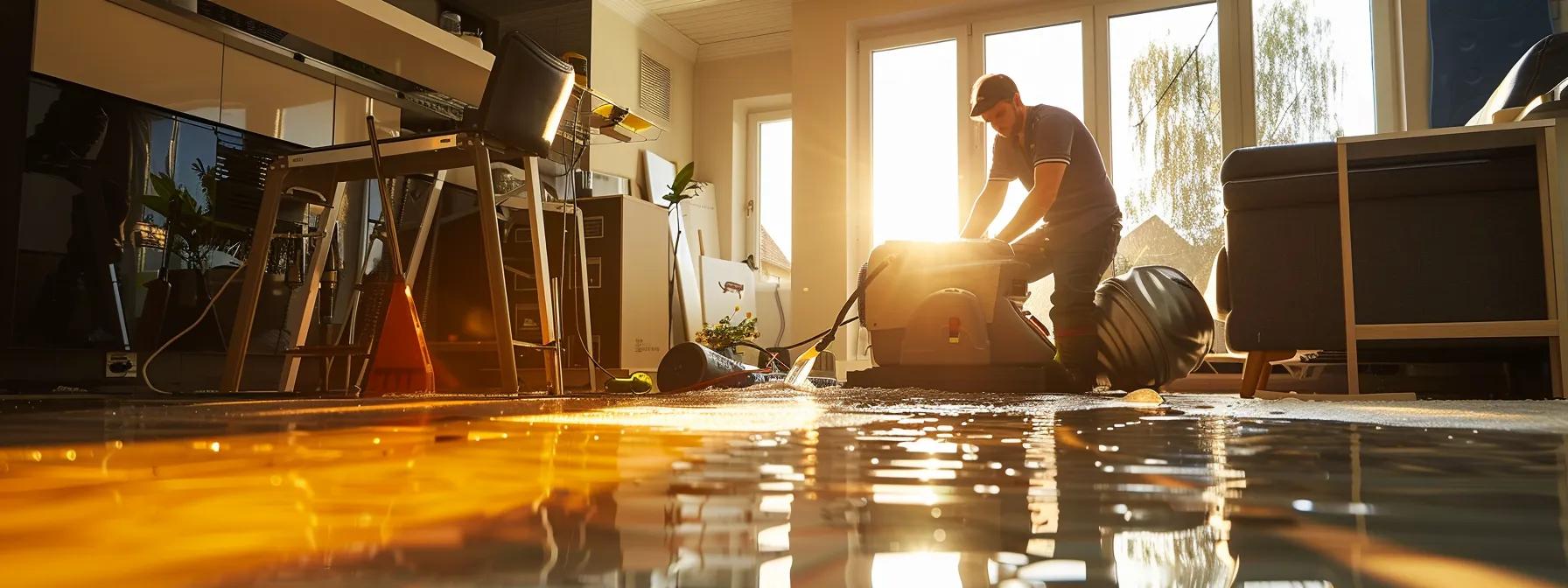
Access to 24-hour water restoration services yields numerous benefits that translate into minimized costs, preserved property value, and enhanced safety. When faced with water intrusion, a round-the-clock response by restoration professionals ensures that the damage does not compound. Immediate intervention by trained technicians decreases the volume of water that is allowed to remain in the property, thereby reducing the potential for structural issues and mold proliferation. Quick action not only saves money on more extensive repairs later but also helps maintain insurance claims at optimal levels, protecting the homeowner’s investment.
Securing Help Regardless of Time or Day
Emergency water damage does not adhere to a schedule. Whether it is the middle of the night or a holiday weekend, prompt assistance remains available. This constant availability means that homeowners never have to wait until normal business hours to address a water emergency—a delay that could prove costly. A 24-hour restoration service mechanism guarantees that help is always one phone call away. This commitment to accessibility not only reassures property owners during stressful times but also ensures that damage is contained within the first critical hours, limiting the potential for long-term deterioration.
Minimizing Disruption to Your Home or Business
Water damage emergencies can greatly disrupt daily routines, whether in residential or commercial settings. Immediate restoration services aim to minimize downtime by swiftly extracting water and beginning the drying process. Fast remediation enables occupants to resume normal activities sooner, reducing the strain on both personal life and business operations. For commercial properties, in particular, minimizing disruption can mean the difference between continued revenue and significant financial loss. Restoration teams follow structured plans that prioritize essential areas to ensure that key operational zones within a building remain functional or are quickly restored.
Reducing the Overall Scope of Water Damage Repairs
By mobilizing immediately, 24-hour restoration services significantly reduce the extent of water damage. Quick extraction minimizes water migration into adjacent areas, preserving structural integrity and reducing the need for extensive repairs. Research suggests that delaying water extraction by even one hour can increase repair costs by up to 10% due to additional moisture penetration and subsequent material degradation. This rapid response prevents small leaks from evolving into major issues such as widespread mold infestation, material warping, and a compromised electrical system. Professional teams not only extract water but also conduct a comprehensive evaluation to ensure that hidden moisture pockets are located and treated accordingly, thereby curtailing the overall repair scope.
Gaining Assurance With Constant Availability
Round-the-clock service provides a critical layer of assurance for property owners. The knowledge that professional help is always available can greatly reduce the stress and anxiety associated with unexpected water damage. Rapid response teams work closely with insurance companies and document every step of the restoration process, ensuring transparency and accountability. This consistent availability and attention to detail empower homeowners to make informed decisions quickly. The clinician-like approach taken by professionals in mitigating water damage emphasizes rapid intervention, thorough drying, and secure sanitization of affected areas.
Faster Return to Normalcy After a Water Incident
Ultimately, the primary benefit of 24-hour water restoration services is the accelerated return to normalcy. Prompt intervention curtails the cascade of secondary damages that would otherwise prolong the restoration process. Homeowners experience less inconvenience, reduced health risks, and lower financial burdens. A fast, coordinated response also preserves the property’s market value and structural integrity over the long term. In an area like Orange County, where environmental conditions can be unpredictable, having a reliable restoration partner available at any time is an invaluable asset to safeguarding investments.
Key Takeaways: – 24-hour services ensure prompt, around-the-clock support to mitigate urgent water damage. – Immediate response minimizes disruptions and helps maintain operational continuity. – Rapid intervention reduces the scale of repairs and the risk of mold growth. – Constant availability provides homeowners with peace of mind and faster recovery.
Consequences of Postponing Professional Water Damage Attention
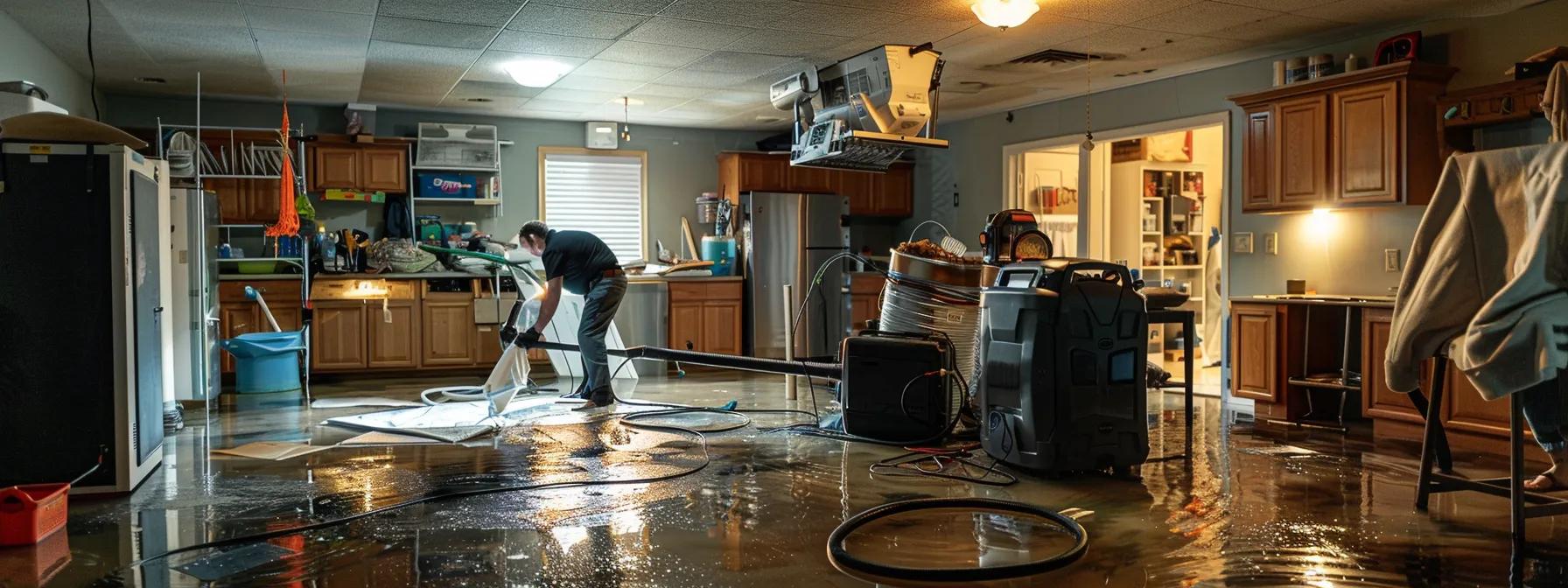
Delaying professional water damage restoration can have severe and lasting consequences. Postponement allows water to continue seeping into structural elements, leading to worsening deterioration. When water is not removed promptly, it can compromise the integrity of building materials such as drywall, wood flooring, and insulation. Extended exposure not only weakens these materials physically but also creates an ideal environment for mold, mildew, and bacterial growth. These biological contaminants not only damage the property further but also pose significant health risks, including respiratory issues and allergic reactions among occupants.
Escalating Structural Deterioration in Buildings
When water is allowed to set, the structural integrity of a building is progressively compromised. Prolonged exposure results in rot, corrosion, and weakening of load-bearing elements. For example, untreated water damage in wood framing can lead to significant decay, ultimately reducing the overall stability of the structure. Over time, this deterioration can necessitate expensive structural repairs or even rebuilding portions of the property. Structural engineers often report that every hour of delay in processing water damage repairs amplifies the risk of irreversible damage, making early intervention an essential factor in protecting property investments.
Proliferation of Mold and Bacterial Contamination
One of the most dangerous outcomes of delayed water remediation is the uncontrolled growth of mold and bacteria. Water-damaged areas that remain unaddressed within 24 to 48 hours become fertile breeding grounds for mold, which can release harmful mycotoxins into the environment. These contaminants not only damage building materials but also compromise indoor air quality, potentially leading to chronic respiratory conditions and other health complications. Studies have shown that mold spore counts can rise exponentially if water is not promptly extracted and dried. The cost of mold remediation far exceeds that of initial water damage repair, reinforcing the need for rapid intervention.
Increased Complexity and Cost of Restoration
Delaying professional intervention inevitably increases the complexity and overall cost of restoration. When water is left untreated, it can seep into hidden cavities behind walls, beneath floors, and within insulation. This hidden water makes thorough drying much more difficult and time-consuming. Restoration companies then have to invest in additional time, equipment, and labor to locate and treat these moisture pockets. Moreover, the subsequent mold remediation and potential structural repairs add significant expense to an already dire situation. Homeowners who hesitate to call for prompt help often face the compounded costs of emergency services, comprehensive cleaning, and extensive repairs that could have been prevented with immediate action.
Potential Health Risks for Occupants
The health implications of delayed water damage remediation are significant and should not be underestimated. Prolonged exposure to damp and moldy environments increases the risk of respiratory illnesses, allergies, and other airway complications. Vulnerable populations such as young children, the elderly, and those with preexisting conditions are particularly at risk. The stagnant water itself can harbor bacteria, viruses, and other harmful pathogens, creating a hazardous living environment. Health experts underscore that immediate water removal not only protects the property but also safeguards the health and well-being of its occupants.
Long-Term Damage to Furnishings and Fixtures
Beyond structural concerns, delayed water damage repair severely impacts personal belongings and built-in fixtures. Upholstered furniture, carpets, and electronics are prone to absorbing water and becoming permanently damaged if not dried promptly. Once contaminated, these items often require professional cleaning or replacement. In addition, fixtures such as cabinets, countertops, and flooring can warp or deteriorate over time, compromising both aesthetic appeal and functionality. The cumulative effect of these damages can significantly reduce the overall value of the property and translate to high financial losses for homeowners.
Key Takeaways: – Delaying water damage restoration leads to irreversible structural deterioration and increased repair costs. – Extended moisture exposure promotes hazardous mold and bacterial growth, posing health risks. – Increased restoration complexity and expense result from untreated water seeping into hidden areas. – Postponement can irreparably harm personal belongings and built-in fixtures.
Key Stages in Effective Emergency Water Removal and Drying
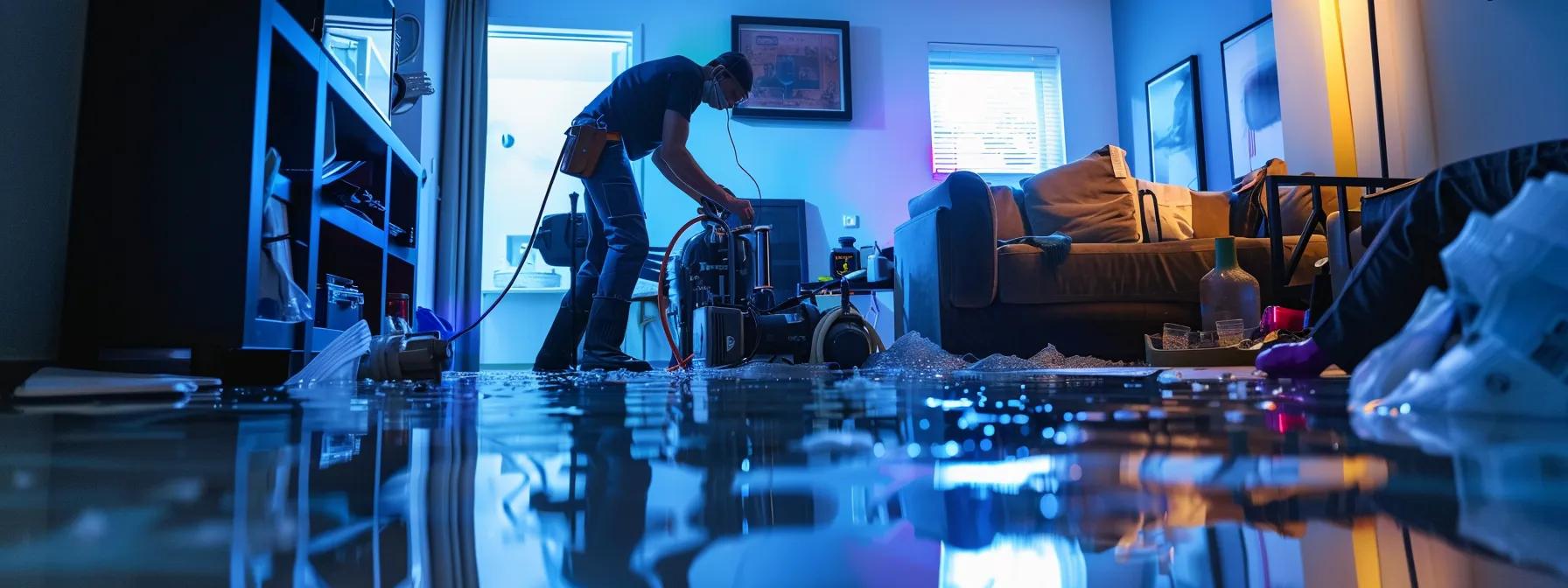
Effective emergency water removal and drying are critical components of a comprehensive water damage restoration plan. This process is meticulously designed to extract water, reduce moisture levels, and prevent secondary damages such as mold infestations and structural decay. The restoration process typically unfolds in several key stages, each of which is essential to ensuring the long-term integrity and safety of the property. Through a combination of advanced technology and proven techniques, professional restoration teams work diligently to restore affected areas to their pre-damage condition.
Advanced Water Extraction Technologies We Utilize
Restoration professionals employ a variety of advanced water extraction technologies to rapidly remove standing water. High-powered pumps, industrial-grade wet/dry vacuums, and submersible extraction units are used depending on the severity of the water exposure. These machines are capable of extracting water efficiently even from hard-to-access areas, significantly reducing the total water load in a property. Techniques such as pump suction and vacuum extraction are often combined to achieve optimal results. In addition, automated systems monitor the extraction process to ensure that the maximum amount of water is removed before proceeding to the drying phase. The integration of such technologies enables teams to substantially reduce the damage window, thereby limiting the overall impact on the structural components and personal belongings.
Comprehensive Moisture Detection and Mapping
Moisture detection and mapping are critical steps that follow the physical extraction of water. Professionals use specialized equipment, including moisture meters and thermal imaging cameras, to identify hidden pockets of moisture that may not be visible to the naked eye. These devices provide detailed maps of the affected areas, allowing technicians to pinpoint locations where water has penetrated deep into walls, floors, and other materials. This comprehensive assessment ensures that no moisture is left untreated, which is pivotal for preventing future mold growth and structural degradation. By accurately documenting moisture levels at various points throughout the property, restoration teams create a baseline that guides the drying process and facilitates ongoing monitoring, making adjustments as necessary.
Strategic Air Mover and Dehumidifier Placement
Once water extraction is complete and moisture mapping has identified the affected areas, the next stage involves the strategic placement of air movers and dehumidifiers. Air movers are industrial fans designed to circulate air rapidly, accelerating the evaporation process on wet surfaces. Simultaneously, dehumidifiers work to remove moisture from the air, reducing ambient humidity levels and enhancing the drying efficiency. Placement is key—technicians position these devices in a manner that maximizes airflow across all moisture-laden areas. Their combined operation ensures that both surface moisture and hidden moisture within walls and structures are effectively reduced. By continuously monitoring the drying environment with moisture sensors, professionals are able to modify the positioning and power settings of the equipment as needed to achieve optimal drying conditions.
Monitoring and Adjusting the Drying Environment
Continuous monitoring of the drying environment is essential throughout the restoration process. Restoration teams set up environmental sensors and moisture meters to track the progress of the drying cycle in real time. Based on these readings, adjustments to the equipment configuration or the overall drying strategy may be necessary. This proactive approach ensures that no area remains at risk of re-saturation or mold growth. Consistent monitoring guarantees that the restoration process is efficient and complete—any anomalies or unexpected water sources are addressed immediately. Moreover, regular assessments provide valuable data for documenting the restoration process, which can be useful for insurance claims and future reference.
Final Cleaning and Sanitization Post-Restoration
Once the drying process is complete, a final phase of cleaning and sanitization is undertaken. This step involves the removal of any residual contaminants, dust, and mold spores that may have developed during the water exposure. Professional cleaning solutions, along with antimicrobial treatments, are applied to all surfaces to ensure that the property is not only dry but also safe for occupancy. This final stage is integral in restoring the property to a habitable state, preventing post-restoration health hazards while also enhancing overall indoor air quality. Technicians carefully document the conditions before and after sanitization to provide a comprehensive report to the homeowner and the insurance provider.
Key Takeaways: – Advanced water extraction tools rapidly remove standing water to initiate restoration. – Comprehensive moisture detection ensures hidden water is identified and addressed. – Strategic positioning of air movers and dehumidifiers accelerates the drying process. – Continuous monitoring allows for adjustments to maintain optimal drying conditions. – A thorough final cleaning and sanitization phase ensures a safe, habitable environment.
Identifying a Reliable 24/7 Water Damage Restoration Partner in Orange County
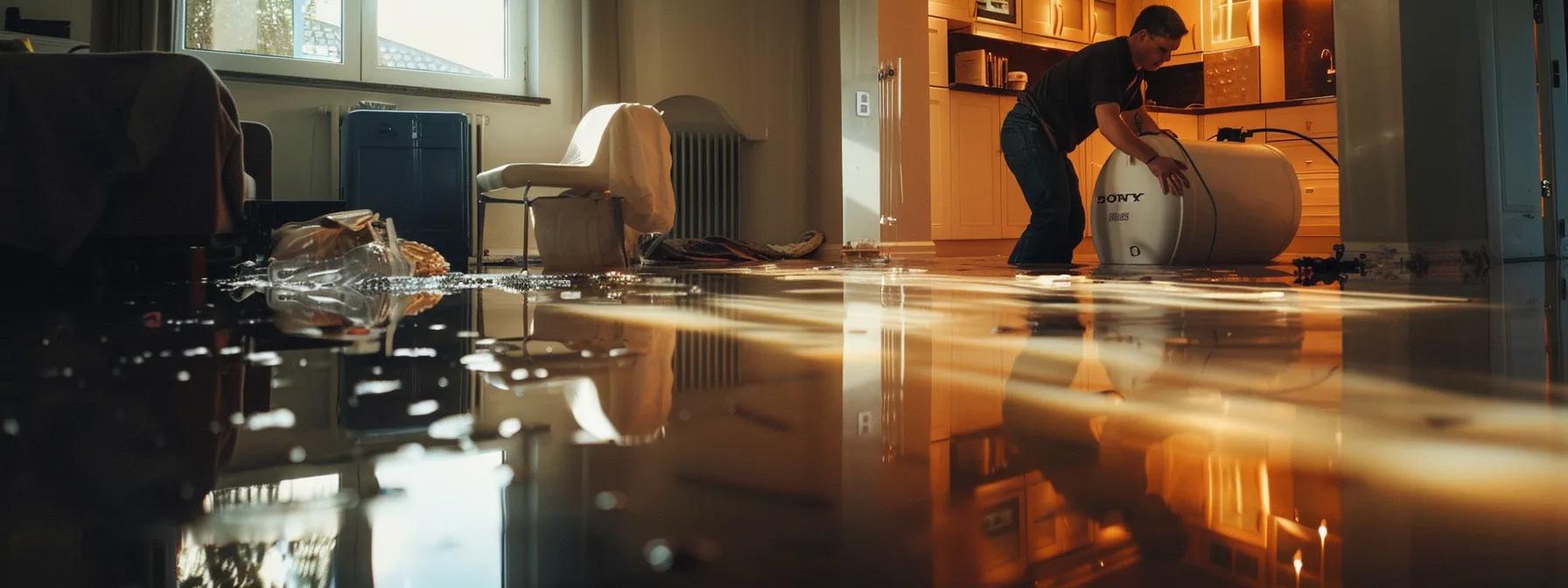
Choosing the right water damage restoration partner is essential for ensuring that water incidents are managed swiftly and effectively. In Orange County, where environmental conditions like humidity, rain, and sudden floods are common, reliable restoration services can make a significant difference in reducing long-term damage. Homeowners and business owners must look for companies that offer 24/7 emergency support, employ certified technicians, and have a proven track record of successful water extraction and drying projects. When evaluating potential partners, it is important to consider industry certifications, local expertise, and evidence of past restoration success. A restoration partner with a robust portfolio and customer satisfaction testimonials is typically equipped to handle emergencies of varying scale—from small leaks to major floods—and can provide the technological expertise needed, including infrared inspections and advanced drying equipment.
Confirming Industry Certifications and Local Expertise
A reputable water damage restoration company will hold certifications from well-known industry organizations such as the IICRC. These certifications indicate that the team is trained in the latest remediation technologies and adheres to strict safety and quality standards. Additionally, local expertise in Orange County is crucial because restoration professionals who understand the regional climate and common structural issues can provide more tailored solutions. Certifications, coupled with years of local operational history, are reliable indicators of a company’s ability to deliver effective restoration services. Homeowners should ask for proof of certifications and inquire about previous projects similar to their situation. A company with extensive local experience is more likely to offer a rapid and efficient resolution to water damage incidents.
Evaluating Their Commitment to Rapid Water Damage Response
Speed is paramount in water restoration. A trustworthy partner will emphasize rapid response times and offer a clear, well-documented process immediately after a water incident is reported. It is important for property owners to ask how quickly the company can mobilize a team, what technologies are used to minimize water extraction time, and how proactive communication is maintained during the restoration process. Many leading restoration firms in Orange County outline their response timelines on their websites and provide customer testimonials that highlight their commitment to immediate action. Evaluating these factors helps to ensure that the chosen partner not only meets industry standards but also prioritizes minimizing downtime and further damage.
Seeking Proof of Successful Restoration Projects
Reviewing case studies, customer testimonials, and before-and-after project photos can provide invaluable insight into the effectiveness of a restoration partner’s work. Reliable companies often document their restoration projects in detail, demonstrating successful water extraction, drying, and overall property rehabilitation. Case studies offer tangible evidence that the restoration process was executed flawlessly, even in complex scenarios. Prospective customers can evaluate companies based on the consistency of results, the quality of post-restoration clean-up, and the overall customer satisfaction reported by previous clients. This documentation builds trust and serves as a powerful endorsement for potential service providers.
Understanding Their Insurance Claim Support
Navigating the insurance claim process can be overwhelming during a water damage emergency. A proficient restoration partner will offer comprehensive support with insurance claims by providing detailed documentation of the damage and the restoration steps taken. This includes detailed reports, moisture mapping images, and photographs before, during, and after the restoration project. By helping the property owner understand and manage their insurance claim, a reliable restoration partner alleviates additional stress. Their ability to streamline the insurance process not only reinforces their professional expertise but also ensures that the financial burden from water damage is minimized.
Ensuring Clear Communication Throughout the Process
Effective restoration hinges on transparent and consistent communication between the service provider and the homeowner. A trustworthy partner will have a dedicated customer service team that provides regular updates from the initial assessment through the final stages of remediation. This openness ensures that property owners remain well-informed about progress, timeline adjustments, and any potential complications. Clear communication reinforces trust, reduces misunderstandings, and facilitates a smoother restoration process overall. Homeowners are encouraged to inquire about communication protocols, report response times, and verify that detailed restoration plans will be shared within the first hours of service.
Key Takeaways: – Verify that the restoration partner holds essential industry certifications and local expertise. – Evaluate the company’s rapid response commitment through documented timelines and testimonials. – Review case studies and project documentation to assess effectiveness. – Ensure the partner provides thorough insurance claim support. – Choose a company that maintains clear, consistent communication throughout the restoration process.
Frequently Asked Questions
Q: How critical is the first hour after water damage appears? A: The first hour is crucial because water rapidly saturates materials and begins causing structural damage. Immediate extraction and drying are necessary to prevent severe material compromise, mold growth, and increased repair costs.
Q: What advanced tools are used in water damage restoration? A: Restoration teams use a combination of high-powered industrial vacuums, submersible pumps, infrared cameras, moisture detection meters, air movers, and dehumidifiers. These tools help rapidly extract water, identify hidden moisture pockets, and ensure thorough drying of affected areas.
Q: Can 24/7 restoration services really reduce mold risk? A: Yes, by rapidly extracting water and initiating drying within the critical first hours, restoration services drastically lower the environmental conditions necessary for mold growth. This prompt action minimizes the chance of mold spores germinating and prevents long-term contamination.
Q: How do restoration experts support insurance claims? A: Reliable water damage restoration companies document every step of the process with detailed reports, photographs, moisture mapping, and industry-standard protocols. This thorough documentation helps homeowners navigate the insurance claim process and often speeds up claim approvals.
Q: What should homeowners look for when choosing a water damage restoration partner? A: Homeowners should verify certifications (e.g., IICRC), check local experience, evaluate response time commitments, review documented restoration successes, and ensure the company provides clear communication and insurance claim support. These factors indicate a reliable and efficient restoration service.
Q: How long does the entire restoration process take? A: The timeline varies depending on the severity of the damage. Initial water extraction and drying may take one to two days, while full restoration, including cleaning and sanitization, may extend to several days. Prompt initial response is key to shortening the overall restoration period.
Q: Are restoration services safe for my property and health? A: Yes, professional restoration teams adhere to strict safety protocols and industry standards, using advanced protective equipment and antimicrobial treatments to ensure that both the property and occupants are safeguarded against contaminants and structural hazards.
Final Thoughts
Rapid water damage restoration is essential to prevent costly and dangerous consequences of prolonged water exposure. By understanding the urgency in each phase—from immediate extraction to comprehensive drying and sanitization—property owners can protect their investments and health. Partnering with a certified restoration service in Orange County ensures that water emergencies are handled efficiently, restoring your home and peace of mind quickly. Homeowners are encouraged to act promptly at the first sign of water intrusion to avoid the spiraling costs and risks associated with delayed intervention.


